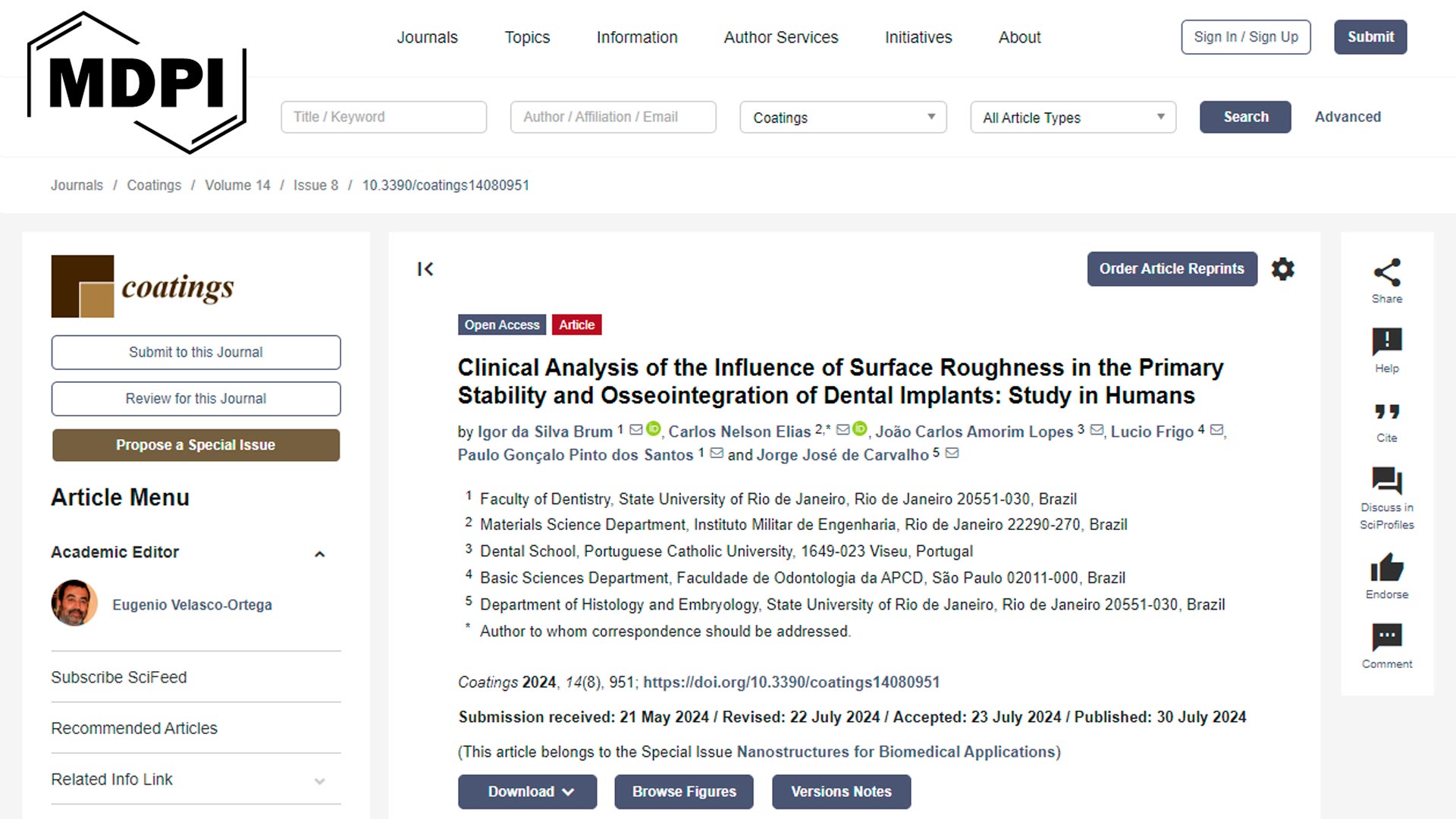In past decades, the success rates of the first dental implant treatments were low (75%). Nowadays, oral rehabilitation with titanium dental implants has a high success rate (95%–98%). The success rate significantly increases due to increased scientific knowledge about osseointegration, changes in surgical techniques, and the development of implant surface treatments. Despite the high success rate of implants, there are no protocols to define the time for the prosthesis to be installed, the insertion torque, and the prosthesis loaded after surgery. This work compares a new dental implant’s primary (mechanical) and secondary (osseointegration) stability. Dental implants with micro- and nano-roughness surfaces were placed in 24 patients with a minimum of 35 N·cm and a maximum of 60 N·cm. Primary stability was quantified with a torque wrench and an Ostell Mentor Device. The secondary stability 45 and 60 days after surgery was measured with Ostell. The results showed no statistical difference in secondary stability at 45 and 60 days postoperatively among implants. The success rate of dental implants can be associated with the surface morphology with micro- and nano-roughness, the insertion torque value, and the shape of the implant threads. When the manufacturer’s guidelines are followed, it is possible to prosthetically rehabilitate the patient with an implant 45 days after surgery.
O principal tratamento para restaurar a mastigação e a estética em pacientes edêntulos é a reabilitação com implantes dentários de titânio. Há quatro décadas, os tratamentos com implantes dentários apresentavam baixas taxas de sucesso (75%). Com o aumento do conhecimento científico sobre osseointegração, mudanças nas técnicas cirúrgicas, desenvolvimento de tratamentos de superfície dos implantes dentários e alterações nas formas e filetes dos implantes, a taxa de sucesso aumentou. Este estudo analisou a estabilidade primária e secundária (osseointegração) de um novo tratamento de implante dentário com ataque ácido com micro e nanorugosidade. A estabilidade dos implantes foi medida imediatamente após a cirurgia e 45 e 60 dias após a cirurgia usando um torquímetro e um dispositivo Ostell Mentor. Os implantes foram colocados em 24 pacientes (33,3% homens e 66,6% mulheres) em alvéolos cicatrizados.
Os resultados mostraram que os implantes dentários analisados apresentam osseointegração. Não há diferença estatística na estabilidade secundária aos 45 e 60 dias de pós-operatório entre implantes instalados com mínimo de 35 N.cm e máximo de 60 N.cm. Com base nos resultados obtidos é possível concluir que o sucesso se deve à micro e nano rugosidade superficial e ao formato da rosca do implante. Quando as orientações do fabricante são seguidas, é possível reabilitar proteticamente o paciente com implante dentário 45 dias após a colocação do implante.

